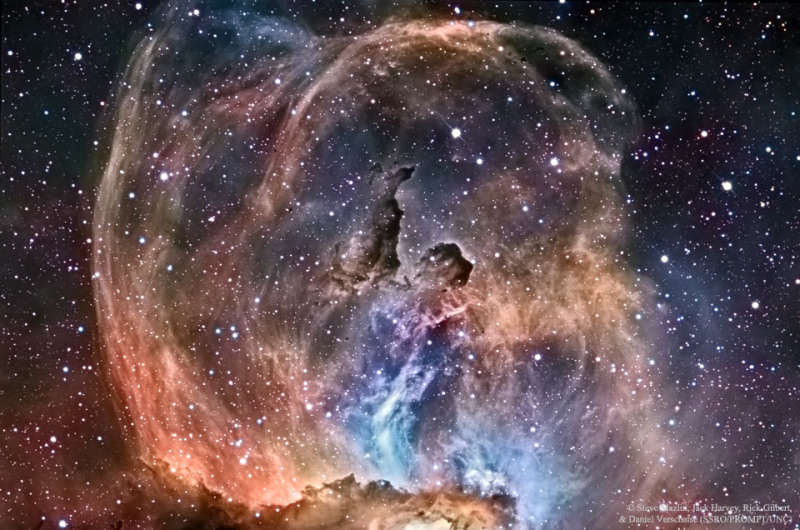
|
Explanation: What's happening in the Statue of Liberty nebula? Bright stars and interesting molecules are forming and being liberated. The complex nebula resides in the star forming region called RCW 57. This image showcases dense knots of dark interstellar dust, bright stars that have formed in the past few million years, fields of glowing hydrogen gas ionized by these stars, and great loops of gas expelled by dying stars. A detailed study of NGC 3576, also known as NGC 3582 and NGC 3584, uncovered at least 33 massive stars in the end stages of formation, and the clear presence of the complex carbon molecules known as polycyclic aromatic hydrocarbons (PAHs). PAHs are thought to be created in the cooling gas of star forming regions, and their development in the Sun's formation nebula five billion years ago may have been an important step in the development of life on Earth. The featured image was taken at the Cerro Tololo Inter-American Observatory in Chile.
Free Download:
APOD 2017 Calendar: NASA Images
|
January February March April May June July August September October November December |
| ||||||||||||||||||||||||||||||||||||||||||||||||
NASA Web Site Statements, Warnings, and Disclaimers
NASA Official: Jay Norris. Specific rights apply.
A service of: LHEA at NASA / GSFC
& Michigan Tech. U.
Based on Astronomy Picture
Of the Day
Publications with keywords: emission nebula
Publications with words: emission nebula
See also:
- APOD: 2025 December 9 Á The Heart of the Soul Nebula
- APOD: 2025 September 19 Á The NGC 6914 Complex
- APOD: 2025 September 10 Á The Great Lacerta Nebula
- APOD: 2025 July 21 Á Cats Paw Nebula from Webb Space Telescope
- APOD: 2025 July 16 Á The Rosette Nebula from DECam
- APOD: 2025 July 5 Á Ou4: The Giant Squid Nebula
- APOD: 2025 June 26 Á The Seagull Nebula
